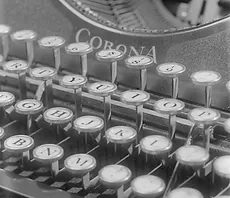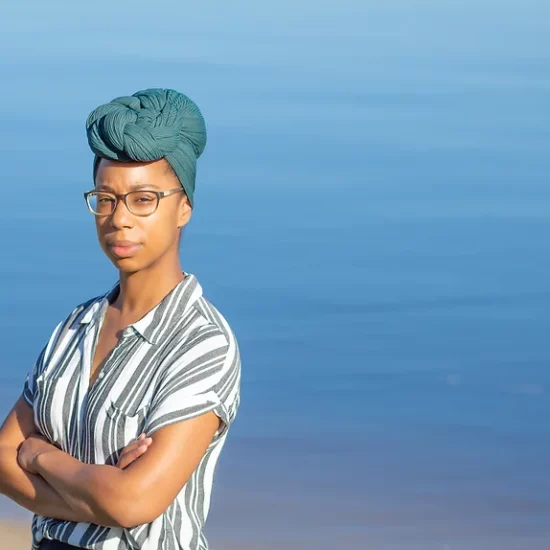Photo by Smith Collection/Gado/Getty Images
I love the beautiful revolution of Black women and girls being in our bodies, in celebrating our joy, in existing fully in ourselves in a world that has proved fraught, unwelcoming, and dangerous.
In 2015, Black women were removed from the Napa Valley Wine Train for laughing loudly—a humiliating and demoralizing experience for the group gathered for an afternoon of book-club sisterhood. They were removed for the audacity of their joy.
As they were escorted from the train, surrounded by police, they filmed and challenged what was happening, garnering national attention; they were revolutionary in refusing their joy be silenced, filing a racial discrimination suit against the company in response. In these moments, the close of Audre Lorde’s “Litany for Survival” echoes in my ears:
So it is better to speak
remembering
we were never meant to survive.
Lorde has always been a model for me of living fully in oneself—both in joy and pain. In The Cancer Journals, the self-proclaimed “black, lesbian, mother, warrior, poet” wrote, in the day before her mastectomy, “And I think I am prepared to lose it … because now I really see it as a choice between my breast and my life … and yet if I cried for a hundred years I couldn’t possibly express the sorrow I feel right now.” The vulnerability of Lorde’s work is one of its many incredible powers.

I think of that visceral vulnerability, of this willingness to speak and be seen, when I see this photo of her by Jack Mitchell—which was rendered into a mural by Rico Gaston, immortalizing Lorde’s life in the 167th Street subway station in the Bronx.
In the mural, light radiates from behind her core. In the original photo, taken five years after her mastectomy, there might not be multicolored beams, but Lorde is radiant. She’s regal. I see her fully present in both her fierceness and vulnerability—a complex intersection at which many of us find ourselves, particularly women at the helm of movements.

Photo by Evening Standard/Stringer/Hulton Archives/Getty Images
Daughter of the Depression and the Jim Crow Era, Nina Simone was on her first European tour when she was swinging from this lamppost in London during the summer of ’65. We know Simone—born Eunice Kathleen Waymon in Tryon, NC—for powerhouse music of a movement like “Four Women” and “To Be Young, Gifted and Black,” but rarely do I see her lighthearted like this—celebrating what it is to be alive and making art and pursuing our ancestors’ wildest dreams.
Despite the horrors she experienced and wrestled with in the early sixties—the bombing of a church and the murder of Medgar Evers, which shifted the nature of her music and career—she’s captured feeling free here. I imagine her champagne slightly sloshing out her glass in later shots, her laugh, her interacting with the world walking by in this moment.
Similarly, I try to imagine what’s just outside of the frame in this photo of Ruby Bridges, another Civil Rights Movement icon. Bridges was six in November 1960 when U.S. Marshalls escorted her down the steps of William Franz Elementary School as she made history integrating the first all-white school in the South in the wake of Brown v. Board of Education.
The act: revolutionary. But Bridges: just a girl—a space far too few Black girls truly get to enjoy. In 2017, Georgetown Law’s Center for Poverty and Inequity found that “adults think Black girls as young as 5 need less protection and nurturing than their white peers,” according to Rebecca Epstein, co-author of the study Girlhood Interrupted: The Erasure of Black Girls’ Childhood.

Photo by Bettmann Collection/Getty Images
Although the photo of Bridges surrounded by suited men and the rendering of that moment in Norman Rockwell’s The Problem We All Live With are how many people remember her, I prefer her here outside of what looks to be a family home—smiling in her collared dress, hands high on her hips as she smiles up at something or someone just outside of the frame. I see not the brave girl marching among men paid to protect her; I see a jovial one.
In 2010, Bridges told Michel Martin of NPR’s Tell Me More she was unaware of the gravity of the situation. She shared, “Well, for me, being six years old, I really wasn’t aware of what was going on,” she shared. “I was … told … that I was going to attend a new school and that I should behave.” She recalled feeling like she’d “stumbled into the middle of a Mardi Gras parade”—unaware the crowd was for her. In these moments, she was protected, nurtured.
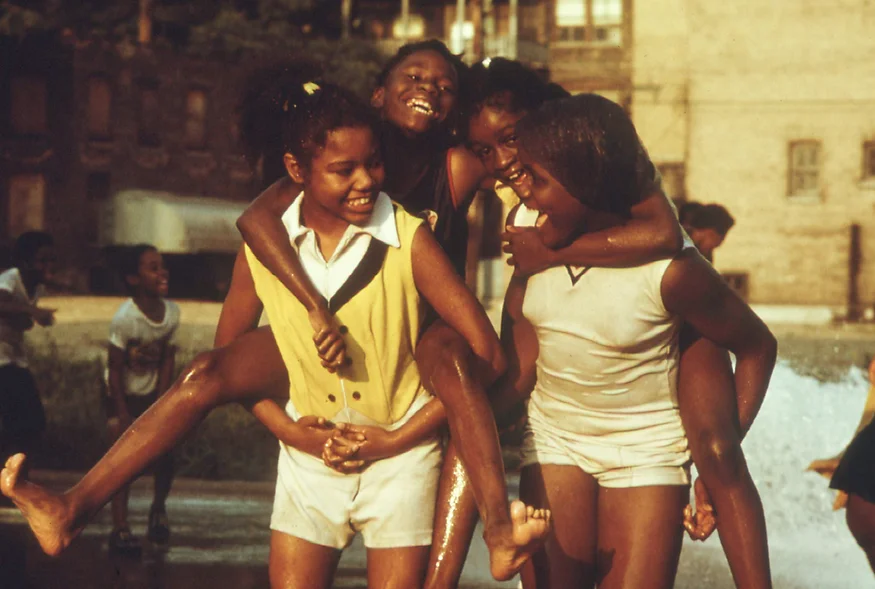
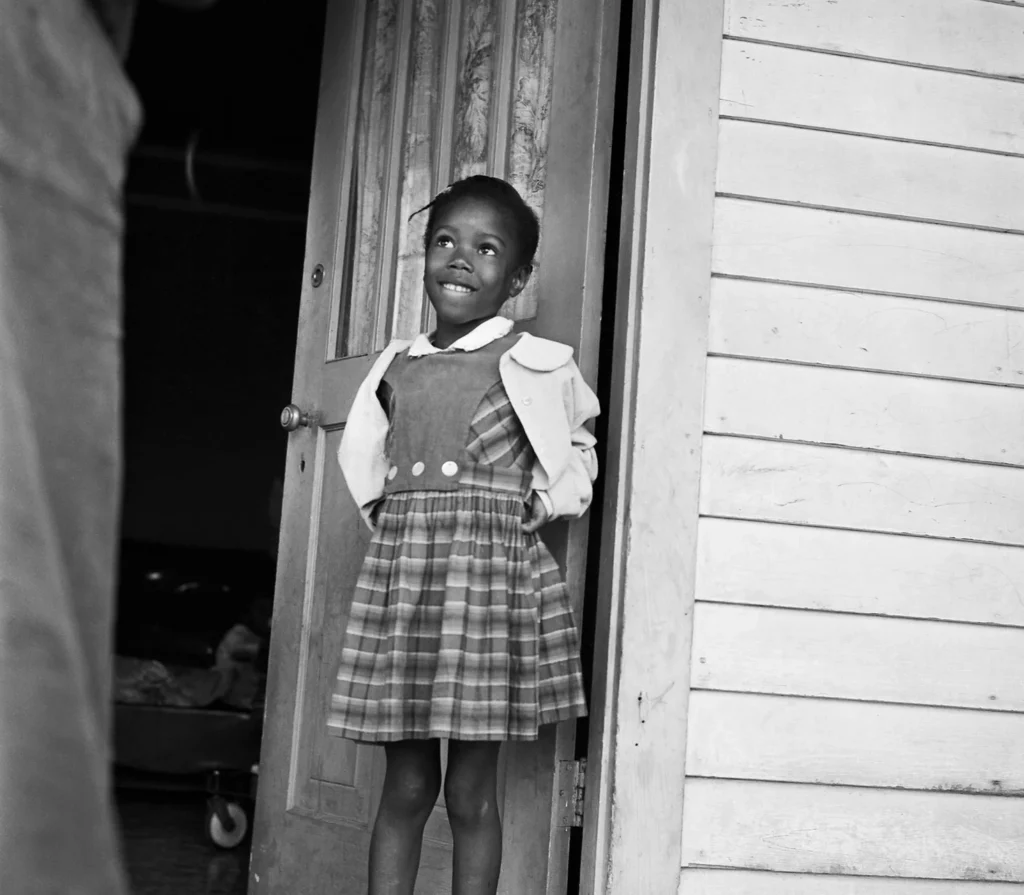
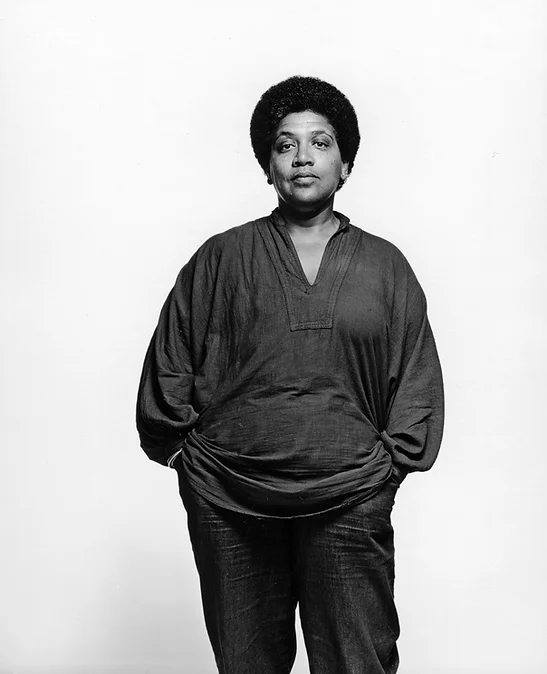
I love this story. I love a story of a girl, a Black girl, getting the opportunity to remain that way, even in the face of insurmountable change, even when people want to hasten the transition from girlhood to womanhood, even under the threat of violence, particularly when such a darker history exists.
In Birmingham, Alabama, on September 15, 1963, white supremacists murdered Addie Mae Collins (14), Cynthia Wesley (14), Carole Robertson (14), and Carol Denise McNair (11) in the 16th Street Baptist Church bombing. Those four little girls, as many of us know them now, are immortalized in their youth by the brutality of their death. They have been the subject matter of documentaries and inspired songs like Simone’s “Mississippi Goddam.” Their images aren’t part of this essay. It’s not because their faces, bodies, aren’t lives aren’t important. They are; they’ll always be.

Instead, in this essay, I’ve chosen to feature four girls cooling off from the summer sun in the Woodlawn neighborhood of Chicago. Their names have not been recorded in the archive. I do not know their ages.
These four little girls frolicking just ten years after the immortalized ones are anonymous in this archive because, at least in this moment, they transcend national tragedy—the horrors of an unjust society and the ramifications of its pain hadn’t been mapped on their childhood. They weren’t in a church basement in Birmingham, Alabama, in 1963. They weren’t pulled over driving down a highway together in Waller County, Texas, in 2015. They weren’t startled awake at a sleepover, tucked tight in their sleeping bags in Louisville, Kentucky, in 2020.
Instead, the girls in this photo in 1973 are just that: girls. These girls are not in competition, not running a race, instead finding themselves holding each other up and in a moment of embrace. These girls are youthful. That is revolutionary: the laughter, the joy, the comradery.
Black women and girls being fully present in our bodies, our lives, our laughter, our heartache, our joy, our friendships, our family, ourselves is revolutionary, and it’s on record here in the archives.

Listen to the author:
Learn More:
Lorde, Audre. Sister Outsider: Essays and Speeches. New York: Crossing Press, 1984.
Lorde, Audre. The Cancer Journals. San Francisco: Aunt Lute Books, 1980.
Bridges, Ruby. This is Your Time. New York: Penguin Random House, 2020.
Simone, Nina. I Put a Spell on You: The Autobiography of Nina Simone. Boston: De Capo Press, 1992.
Lee, Spike (Director). (1997) 4 Little Girls [Film]. 40 Acres and a Mule Filmworks.



